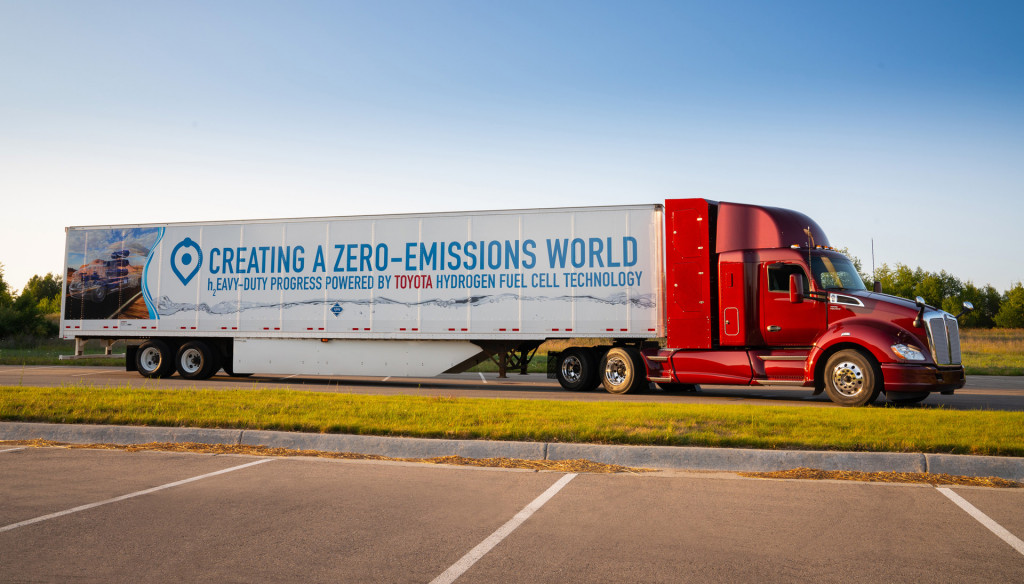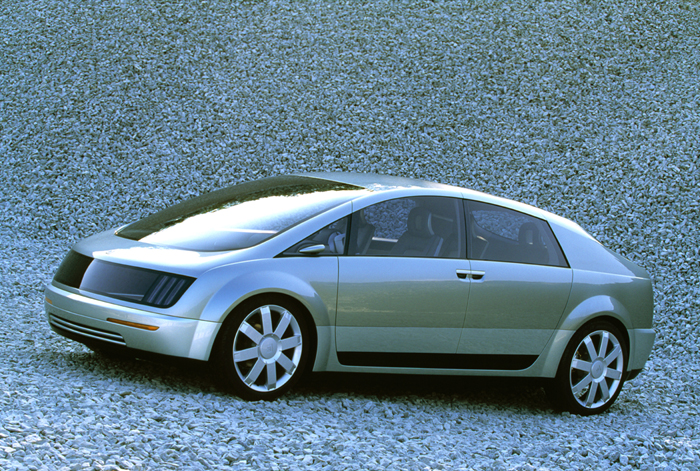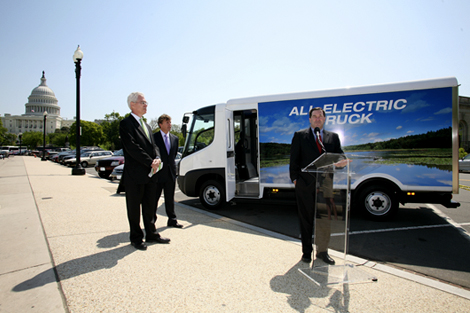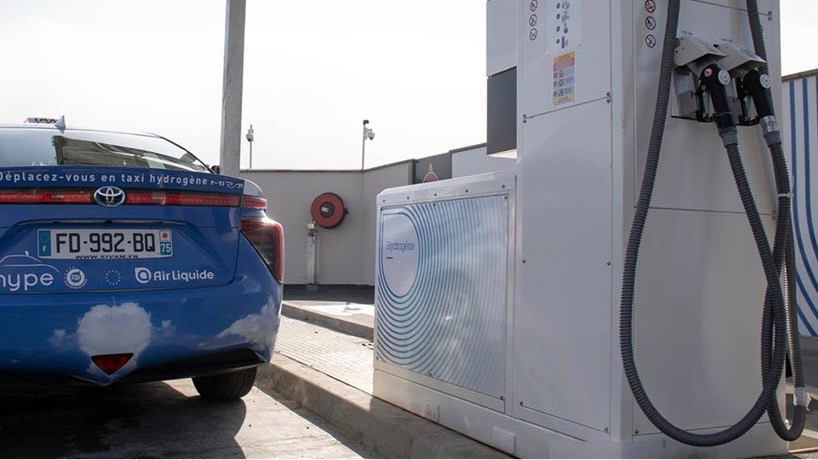The commercial truck maker Navistar International is teaming with General Motors to put 2,000 fuel-cell semis, each with a range of more than 500 miles and 15-minute refueling, into use “in the near term,” the companies jointly announced Wednesday.
For the project, which fits in alongside GM’s $27 billion electric vehicle plan, GM will supply energy to power an electric motor system via two of its fuel-cell stacks—in this case called “Hydrotec fuel-cell power cubes” and each containing more than 300 cells. North Carolina–based OneH2 will supply what it described as a modular hydrogen solution that can be refueled via deliveries for smaller needs or by reforming the hydrogen “on demand” to refuel the trucks.

GM Hydrotec fuel-cell stack for trucks
GM said that this agreement is independent of any other arrangements—namely, that with Nikola Corporation—and doesn’t affect them. As of late November, GM reached a memorandum of understanding with Nikola to supply its Hydrotec system for Nikola’s Class 7 and Class 8 commercial trucks.
The Hydrotec system for the Nikola trucks is due to be manufactured at its Brownstown battery plant, but GM wouldn’t disclose a production location for the units to be used in the Navistar project. The size and scope of the project are much larger than Toyota's Project Portal, which has employed heavy-duty fuel-cell trucks primarily for port duty so far.

Toyota Project Portal 2.0 fuel cell-powered semi-trailer truck
Navistar plans to deliver the first production versions of the trucks, to be badged the International RH Series fuel-cell electric vehicle, for model year 2024, while test vehicles will start a pilot phase by the end of 2022.
Flexibility, low operating costs, and zero tailpipe emissions
The transport and logistics company J.B. Hunt will be the initial partner for the project. The company has a lot of flexibility for deploying the fuel-cell trucks, with 521 unique locations that the hydrogen hardware might be fitted to, with anywhere from 5 to 200 trucks based at each location.
While Navistar confirmed that the top-range solution will combine a battery pack and a hydrogen tank—likely using the battery as a buffer for producing peak power and getting a load up to speed, and storing away energy from braking—it didn’t disclose any details about how much hydrogen will be stored on board, or at what pressure it will be kept.
Navistar says that the fuel-cell truck will offer better power density for short-range trips, better short-burst output, and a per-mile cost that’s comparable to diesel trucks “in certain market segments,” it said in a release.

2002 GM Hy-Wire Concept
GM has put about 15 years of development and more than 3.2 million real-world miles on hydrogen fuel-cell vehicles.
Fuel cells or batteries?
In a Q&A, Navistar eMobility VP Gary Horvat said that both fuel-cell and battery-electric are viable technologies in the heavy-duty truck marketplace.
“As we go farther from 300 miles to 500, even more miles than that...the fuel cell has an advantage,” he said, and it really depends on what the daily range is for the vehicle and what makes sense for the end users. Higher-range EVs with big battery packs take payload out of the customer’s business, and the charging time is much longer. Hydrogen allows faster refueling and occupies far less of the payload.
That’s contrary to what Tesla CEO Elon Musk has said, even before the existence of its Semi project—that fuel-cells simply can’t match modern battery tech.
“If you've got a heavier payload and you're traveling longer distances, you need the faster fueling times,” said Charles Freese, head of GM’s global fuel-cell business. “These trucks don't make money if the wheels aren’t turning.”

Navistar eStar electric delivery truck in Washington, D.C.
The project will also seek U.S. Department of Energy funding, including “grants and opportunities for the ecosystem,” but this project won’t be dependent on it, said Navistar CEO Persio Lisboa.
“This program is not driven by credits, it’s really by total cost of ownership and what makes sense for our customers and all of our partners through the enterprise,” added Horvat, who said that “renewable natural gas”—assumed to be from landfills or biomass—is considered by the project to be a starting point.
Hydrogen sourcing: a floating target
OneH2 CEO Paul Dawson walked that back a bit, though. For now, the project will rely on hydrogen produced by steam-methane reforming, he said, because it “gives the customer the lowest cost of energy,” he said. Capturing carbon from the process is “not a quantum leap into the future,” he added.

Air Liquide dual-nozzle hydrogen fueling station
Dawson claimed that reforming hydrogen from grid energy can impact total carbon emissions negatively. “So...as it stands at the moment, if we use renewable natural gas through process, I don’t think we’re any different to using renewable electricity off the grid through electrolysis.”
That’s a controversial point, as analysts last year noted that economies of scale plus the coordinated use of renewable energy could make hydrogen both much greener and cost-effective by 2030.
Although this project claims to be a complete solution for zero-emission long-haul trucking, it underscores what’s missing as of yet. For now the project is merely zero tailpipe emissions; but in the future customers seeking CO2 benefits—and regulators, as trucks go electric—are going to need to push the hydrogen infrastructure to the next level.













